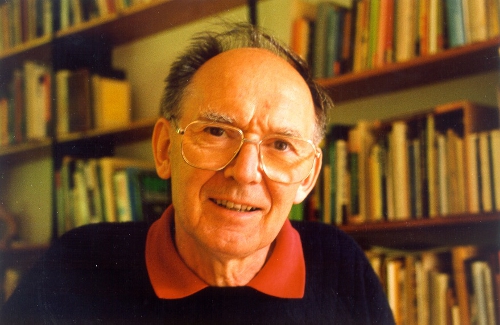 Jaap Tinbergen (Tinbergen family photo)
Jaap Tinbergen (Tinbergen family photo)
Jaap Tinbergen
Contributed by Hugo van Woerden
Jaap Tinbergen was born in The Hague on 19 December 1934. The family moved to the UK in 1949, where Jaap studied Experimental Physics at Cambridge, and Information Engineering in Birmingham. The International Geophysical Year 1958/59 took him to the Antarctic for two years of ionospheric research. In 1960 he came to Leiden Observatory to study astronomy where he shared in studies of the polarization of the Galactic radio radiation, at 75 cm (with Brouw, Muller, Seeger and Westerhout) and at 50 cm (with Berkhuijsen, Brouw and Muller).
From 1964 on Jaap worked with Fjeda Walraven on optical photometry. With his experience in radio-polarimetry, he noted that optical polarimetry was a neglected subject, and he concentrated his efforts there. He obtained a doctorate in 1972 on a thesis Precision Spectropolarimetry of Starlight, and became a world leader in that field. He measured polarization in the light of various stars, but also studied polarization effects in atmospheric haloes and in the atmosphere of Venus (with G.P.Können).
He developed a multipurpose photometer for the William Herschel Telescope at La Palma, and analyzed the polarimetric properties of many telescopes. Jaap served as President of IAU Commission 25 (Stellar Photometry and Polarimetry) in 1982-85. His book Astronomical Polarimetry (Cambridge Univ. Press, 1996) is a much-quoted classic.
Jaap moved to the Kapteyn Observatory at Roden (near Groningen) in 1982, with a group of instrument builders, but remained a staff member of Leiden Observatory, also when in 1996 the group moved to ASTRON at Dwingeloo. During his last years, while fighting a prolonged illness, Jaap had a major share in the design of a polarimetry-based "exoplanet finder" for ESO's Very Large Telescope. He died on 20 June 2010. He will be remembered as a top-class instrumentalist, and a modest, friendly person.
Modified on Monday, 14-Feb-2022 13:24:13 EST by Ellen Bouton, Archivist (Questions or feedback)
|
![[IAU logo]](iau_wb_thumb.jpg)
![[URSI logo]](URSI-logo-thumb.jpg)
![[Karl Jansky at his antenna]](jansky_photo_02_thumb.jpg)
![[Reber's Wheaton antenna]](Reber_Telescope_Wheaton_thumb.jpg)
![[Dover Heights]](Dover_Heights_02_thumb.jpg)
![[4C telescope]](GB61-195_4C_telescope_thumb.jpg)
![[Ewen and horn antenna]](ewen_horn1s.jpg)
![[Dwingeloo, 1956]](Dwingeloo-1956-thumb.jpg)
![[Jocelyn Bell Burnell and Cambridge antenna used in pulsar discovery]](burnell2_thumb.jpg)
![[Lovell Telescope at Jodrell Bank]](site_1594_0001-500-334-20180316163019-thumb150.jpg)
![[Wilson, Penzias, and Bell Labs horn antenna]](wilson-penzias-horn_thumb.jpg)
![[6-m Millimeter Radio Telescope in Mitaka, Japan]](6m-thumb.jpg)

